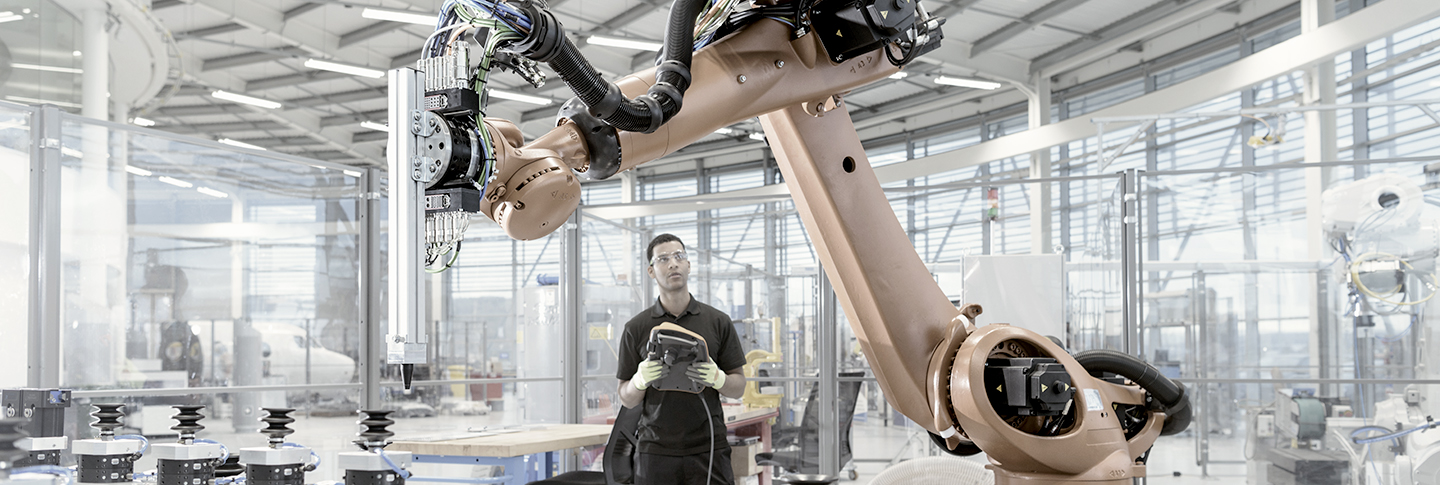Following on from work in recent years, ABeam Consulting conducted its “Survey on the Current State of Smart Factories in Japan – Responding to Manufacturing Challenges Arising from Changes in the Business Environment,” seeking to grasp the present state of and issues in manufacturing automation and DX (smart factory) initiatives within the Japanese manufacturing sector.
Efforts towards implementing smart factories have been advanced in Japanese manufacturing with a view to making manufacturing more efficient. However, many issues have arisen to which simple digitalization (visualization or conversion to AI of simple operations) or automation cannot be applied, as changes have arisen in the business environment in the form of expansions to product lineups, the condensing of product life cycles, the decline in the working-age population, and interruptions to the passing on of skills.
This report looks into the root causes of these issues and presents measures to address them.
Manufacturing DX Report Part 2: The State of Automation and Digitalization Responses to Manufacturing Challenges Arising from Management Changes
- Process
- High Technology
- Engineering Chain Management
- Smart Factory

-

Satoshi Tachibana
Principal Head of Future Tech-value Innovation Strategy Unit -

Takahiro Nishi
Director
1. Aims and Overview of the Survey
Aims of the Survey
The aims of the recently conducted “Survey on the Current State of Smart Factories in Japan – Responding to Manufacturing Challenges Arising from Changes in the Business Environment” (hereinafter referred to as the Survey) are as follows.
- Ascertaining the state of and reasons for the factors hindering the implementation of smart factories up to the model factory level, revealed in the Manufacturing DX Report Part 1
- Extracting issues in the supply chain management (SCM) domain, which fell outside the scope of the first survey, and searching for manufacturing responses aimed at solving those issues
Survey Overview
As part of the Survey, we conducted a questionnaire targeting individuals working in the manufacturing sector in order to ascertain the present state of smart factory projects and interviews to dig deeper into the responses we received (see Figure 1).
Attributes of survey respondents
As part of the questionnaire, we received responses from 513 companies (with no duplicates from single companies) with a wide range of sales.
Breaking down respondents by industry, 74.4% were in discrete manufacturing (plastic product manufacturing, production machinery manufacturing, electronic component, device and circuitry manufacturing, etc.), 9.2% were in process manufacturing (food product manufacturing, chemical manufacturing, steel manufacturing, etc.), while 16.4% were in other manufacturing (see Figure 2).
2. Manufacturing DX, Automation and Supply Chain DX Initiatives, Associated Challenges, and the Factors Behind Them (Summary)
We have excerpted from the survey results some of the present status and challenges facing automation and digitalization efforts in manufacturing and digitalization efforts in SCM.
The present state of automation
Looking at the state of progress of automation in terms of companies by scale, companies with sales between ¥10 billion and ¥100 billion have lower degrees of automation than companies with sales under ¥10 billion. The degree of automation to be higher at companies with sales between ¥100 billion and ¥1 trillion. From interviews, we learned that small-scale companies with under ¥10 billion in sales have limited product lineups, so progress is being made on automation. However, as sales surpasses the ¥10 billion mark, the product lineups of companies also tend to expand.
Companies with over ¥1 trillion in sales have also tended to work to expand their product lineups in recent times, seeking to maintain or expand their sales amidst a declining Japanese population, leading them either to diversify their products or to move towards variable-mix variable-volume production. It was stated this has put them in a position where they cannot simply automate the processes they now have.
Challenges in automation initiatives
The questionnaire showed that the processes and operations that are presenting as bottlenecks to automation are: “Automation of processes related to visual or auditory judgments such as exterior or daily inspections,” “automation of other processes” and “automation of set-up changes” (see Figure 4).
In interviews, we heard comments to the effect that the issue was not so much one of cameras or image analysis technology, even in exterior inspections, but that it was difficult to perform exterior inspections and make judgments about multiple items and types of products simultaneously or in series.
We also heard comments to the effect that while companies were looking into introducing technology such as autochange systems to address the diversification of products in the set-up change process, in which equipment and tools being used are switched or their settings changed in line with product type of process details, they were unable to deal with the number of product types, and could not convert everything to specialized machines. Generally speaking, we found that the diversification of products and moves toward variable-mix variable-volume production were root causes preventing automation.
Challenges in digitalization initiatives
The efforts that have made the least progress in the digitalization space are the “transfer of skills from experienced technicians” (see Figure 5).
In interviews too, we received comments to the effect that there was in issue with techniques previously transferred as implicit knowledge not being effectively passed on due to a lack of personnel from the generation that experienced a job drought while they were job seekers. We heard that companies are thus in a state of being on the verge of a crisis in the passing on of skills.
However, as it is unclear how experienced technicians perform such operations and even what standards are being used in those operations, with it being difficult to analyze parts of tasks that employee all five senses, these are areas where it is difficult to formalize the knowledge needed for digitalization.
Challenges in SCM DX initiatives
As stated above, the diversification of products and moves toward variable-mix variable-volume production are factors that were found in the questionnaire to make it difficult to digitalize handling with the aim of improving production planning precision and optimizing/reducing inventories. On the other hand, we also saw that digitalization aimed at reducing procurement costs had produced results to a certain degree (see Figure 6).
However, in interviews, we heard comments to the effect that, even for reductions in procurement costs, there may be further room for improvement if companies were to look cross-sectionally at things that are procured by individual departments, factories or managers. We also heard opinions to the effect that some efforts were not progressing because it was not possible to check their effects with current data.
3. Directions of Responses to Manufacturing Challenges
In this section, we will summarize the manufacturing challenges we saw in our questionnaires and interviews thus far, and the changes in business environment and management circumstances that lie behind this. We will then go on to cover some of the directions in which responses to manufacturing challenges are going.
Manufacturing Challenges, Their Background, and Directions of Responses
The concept of Industry 4.0 was first introduced in Germany in 2011. It has also been nearly a decade since Japan’s Ministry of Economy, Trade and Industry (METI) released the “Smart Manufacturing Roadmap Survey” in 2017. In this time, progress has been made on visualizing and automating simple processes. However, the issues facing the manufacturing industry and people on the ground at factories have grown more complex. As has been frequently commented on in our interviews, this includes challenges such as addressing moves towards manufacturing more diverse products in smaller volumes and towards variable-mix variable-volume manufacturing (through production planning, manufacture and procurement), skill succession employing the digitalization of technique transfer and implicit knowledge, and dealing with the growing complexity of global forces in the SCM space.
Addressing any of these issues through the use of simple IoT sensing or application of AI to formalized knowledge is impractical. Instead, companies need to address these challenges by combining digital technology, improvements in machine technology and manufacturing, and strategic and organizational response (see Figure 7).
(1) Redesign of processes x DX
The optimal form of production differs intrinsically depending on whether a company is practicing high volume production of limited items or low volume production of a variety of items. As companies continue to move toward variable-mix variable-volume production, it is thus becoming impractical to approach this using existing line production and integrated production. In particular, there are limits to what can be done using traditional line production and job shop production approaches in variable-mix variable-volume production. We believe companies are thus at a point where they should consider moving towards new forms of production that support concepts such as reconfigurable manufacturing systems (RMS) (see Figure 8).
In interviews, some companies have even responded that they are considering RMS because, as products diversify further and variable production levels become more common, it is becoming impossible to deal with this using approaches such as line production. This, while such companies are still a minority, we are already seeing companies achieve the implementation and operation of forms of production such as RMS (see Figure 9).
(2) Digital twins for analyzing implicit knowledge x quantitative/qualitative information
There are multiple factors impeding the formalization of knowledge in operations involving a large portion of implicit knowledge. Examples that have been raised include perceptions using all five senses, judgments coming from experience and ad hoc devices.
Such operations are made up of implicit knowledge, and represent the value of experience that comes from an accumulation of on-the-ground improvements. This has made them a source of competitive edge in Japanese manufacturing. On the other hand, they carry issues that make digitalization and automation difficult, because knowledge of such operations is not formalized.
For this reason, companies need to undertake initiatives to collect these implicit factors as data and extract multiple knowledge formalization patterns, while performing analytic simulations (knowledge digital twins; see Figure 10).
While the original problem is one of how to capture data, applying sensing technology to the problem is not enough. Instead, it is important for companies to gather and store non-sensing data such as the utterances of experience operators and traces of their lines of sight.
(3) Regional clusters x SCM intelligence organizations
The circumstances of supply chains in major countries and regions differ widely, and the changes they are undergoing are gathering pace.
Amidst this, globally integrated SCM operations have become more difficult. This has made it necessary for companies to have national and regional SCM operations organizations, as well as frameworks for supporting the integration of suppliers and the streamlining of deliveries spanning nations and regions through the integration of data.
While there are companies that have already implemented such frameworks, beginning with automotive OEMs, there are also many companies facing concerns over shortages of personnel and know-how in terms of internal operation of SCM.
In circumstances where it is difficult for a single company to secure and deploy resources with an awareness of global conditions, companies will need to work to move towards shared SCM intelligence through joint responses using regional clusters or through outsourcing to SCM contractors (as exist in the MRO space, for example; see Figure 11).
4. Summary
Digitalization has thus far stopped at visualizing processes and performing partial optimizations through the analysis of the visualized information. Despite having made use of specialized machines and articulated robots in combination within the realm of automation, such efforts have only targeted operations, knowledge of which is relatively formalized, and operations consisting of monotonous movements.
However, Japanese manufacturing is presently facing conditions in which it must pursue automation and digitalization, as it faces labor shortages related to process improvement, which had previously been a strength of the sector, and processing techniques by skilled workers.
As the sector also addresses changes in the business environment, such as diversification of products and moves toward to variable-mix variable-volume production, it faces complex issues on the ground that cannot be addressed through simple digitalization or automation efforts, such as the need to maintain and streamline production.
Amidst such circumstances, what is needed on the ground is not the mere introduction of digital and mechanical technology, but drastic measures arising from the combination of digital and mechanical techniques with kaizen (continuous improvement) activities such as traditional industrial engineering (IE) and quality control (QC).
ABeam Consulting’s manufacturing support services
ABeam Consulting possesses the expertise needed to improve and streamline factory operations. We offer not only digital solutions, but also manufacturing transformation services that incorporate kaizen know-how such as process transformation and personnel skill transformation, helping companies address difficult modern challenges in manufacturing, with the aim of moving to variable-mix variable-volume production, addressing labor shortages and transferring skills, as covered in this report (see Figure 12).
We remain committed to working side by side with our clients to not only derive the optimal solutions for various manufacturing floor, but also to support them in their implementation.
Insights
- Manufacturing DX Report Part 1: Survey on the Current State of Smart Factories in Japan – Challenges Emerging Over the Past Decade
- Manufacturing DX Report Part 2: The State of Automation and Digitalization Responses to Manufacturing Challenges Arising from Management Changes
Click here for inquiries and consultations
